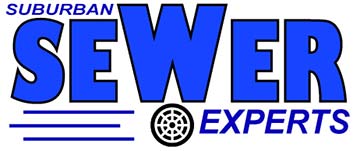
Getting surprised by a clogged shower drain, overflowing toilet, or backed-up sewer line in your home is never a pleasant experience. For many homeowners, sewer line problems always seem to happen at the worst possible time and without prior warnings, says Sand Dollar Management Services.
But is this true?
Actually not. The truth is drain and sewer line problems in your home rarely happen without warning. It is even possible to predict these problems if you pay close attention to your plumbing. How is it possible to detect the onset of sewer line issues in your home?
The answers are surprisingly simple!
Firstly, clogs and blockages happen as a side effect of how sewer lines work. Sewer systems are designed to transport wastewater with lots of solid and semi-solid material in it. It is unavoidable that some of these non-liquid materials will be deposited inside the pipes.
Secondly, as debris accumulates within the pipes, some signs of the brewing issues inside the sewer line will show up in your home. At first, these signs will be mild, but if they are not detected and dealt with, they can cause major plumbing issues in your home.
If there is buildup inside a sewer line, how do you get rid of it? You clean the line. The question is, how do you access an underground pipe to clear out the debris inside it? There are several methods used by professional plumbers to do this. Below, we discuss two of them.
- Sewer rodding
This drain-cleaning method uses a set of flexible rods that are joined end-to-end to make them long enough to reach deep inside the sewer system. The rod is inserted into the clogged sewer line via a cleanout, floor drain, or toilet. Due to its flexibility, the rod is able to wind its way around the twists and turns of the sewer line.
In most cases, a metal cutting head is attached to the tip of the rod. And by using a twisting motion, the plumber is able to dislodge the debris inside the sewer line. However, some sewer rodding operations use a mechanical head driven by a powerful motor. This type of sewer rodding operation is perfect for dealing with stubborn blockages like sludge and tree roots.
- Hydro jetting
Hydro jetting uses high-pressure water to remove debris from a clogged sewer line. This method uses a flexible water hose with a stainless steel nozzle at one end and a pressurizing machine and water tank at the other end. The nozzle, along with the flexible hose, is inserted into the sewer line through a cleanout, floor drain, or toilet.
Once inside the sewer line, a jet stream of pressurized water is used to blast the debris inside the pipes. Under the force of the water exiting its forward- and backward-facing jets, the nozzle is driven forward deep into the sewer line. Hydro jetting uses water pressures of 4,000 – 60,000 PSI, enough to remove sludge, scale, and tree roots.
Does your sewer line need professional cleaning?
Professional drain cleaning should be a fixed part of the plumbing maintenance program for your home. Having your sewer lines cleaned professionally at least once every two years – whether the line is clogged or not – is the best way to prevent clogs and keep your drainpipes flowing.
That being said, what are the signs that a sewer line is clogged and in need of urgent professional cleaning? If you see the following signs in your home, it means there is trouble brewing inside your sewer line, and you need to speak with a professional plumber immediately.
- Multiple slow drains
If a single drain is slow, there is good reason to assume that the cause of the problem is a clog in the drainage pipe for that specific fixture. But if more than one drain is slow at the same time, the source of the problem lies deep inside your drainpipes.
- Recurrent clogs
If your drains are chronically clogged – you clear the blocked or slow drain, but the problem returns after a few days – there is a good chance that you may have a clogged sewer line. You should have a plumber check out the line.
- Sewage odors
Sewer lines that are working properly do not let sewer gases flow backwards into your home. If you smell sewage inside or around your home, it is a sign that a clog within the sewer line is preventing trapped gases from passing through.
- Bubbles and strange sounds
If you see bubbles inside your toilet every time you flush it, or you can hear the gurgling sound of air pushing its way through the water, your sewer line is probably clogged. This is why trapped air is exiting through the drains in your home.
If you find these problems in your home, what should you do?
Do not simply assume that your sewer line is clogged. The problem could be due to other causes. The recommended step is to have a professional plumber do a sewer camera inspection to determine the cause of the issues. If the sewer line is blocked, the next step is to clean it.

